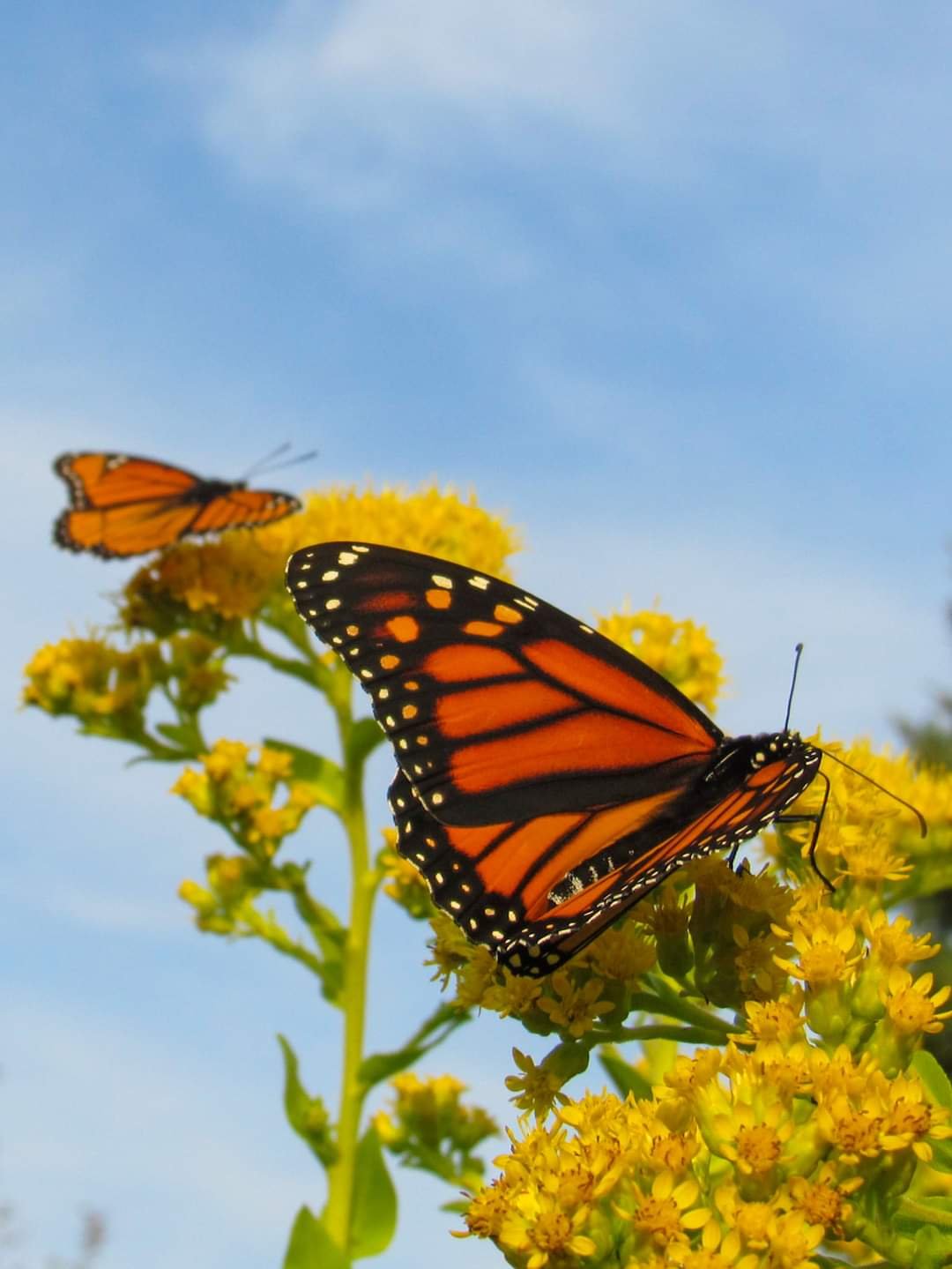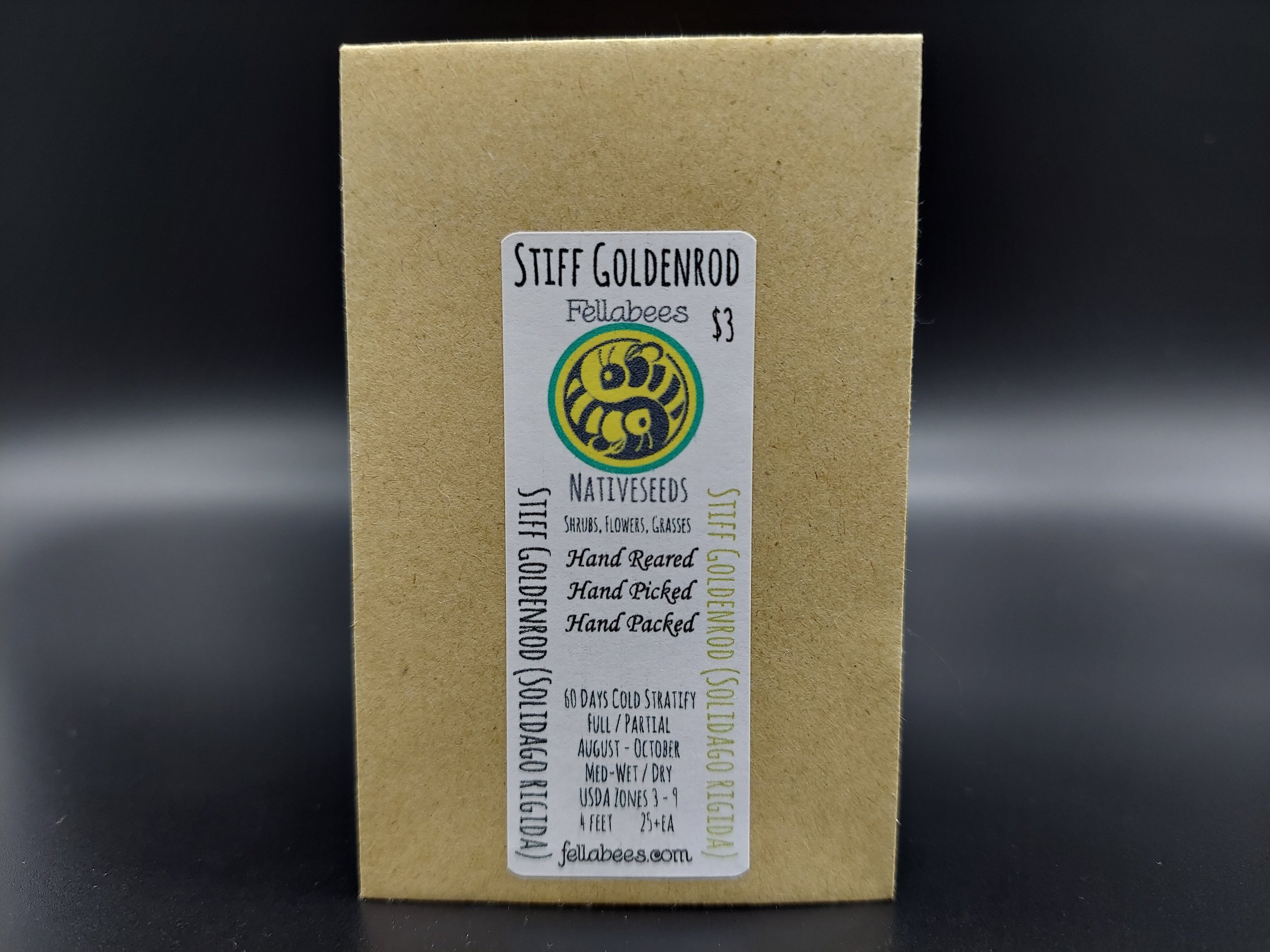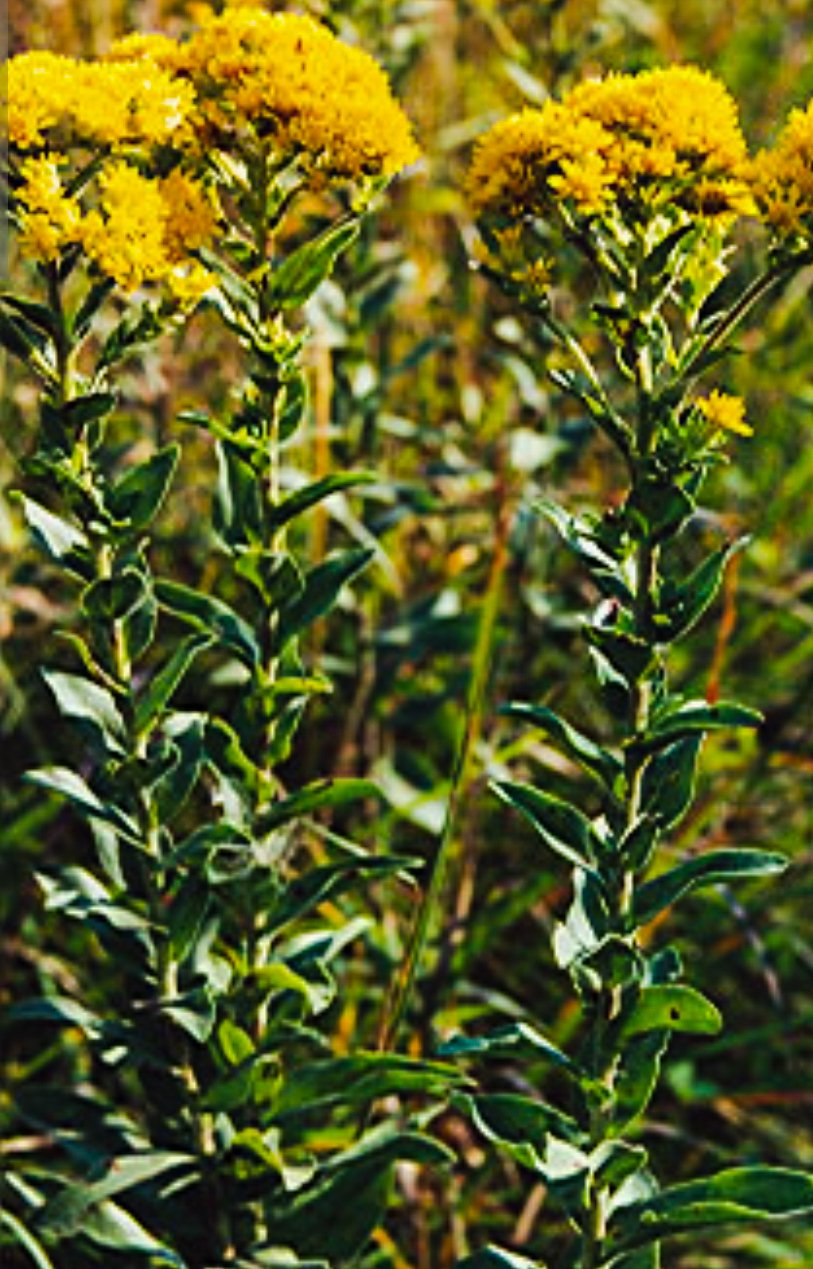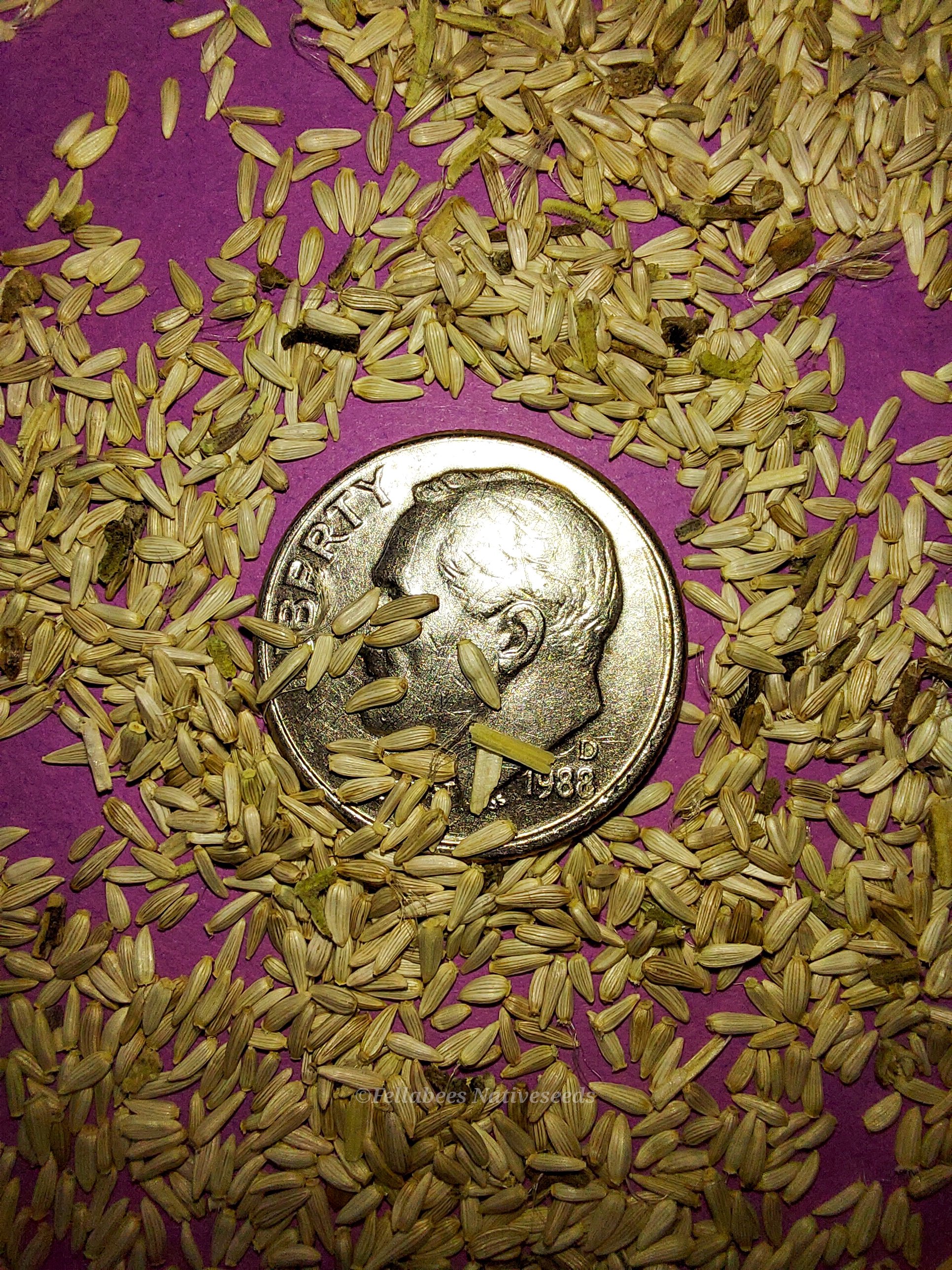 Image 1 of 4
Image 1 of 4

 Image 2 of 4
Image 2 of 4

 Image 3 of 4
Image 3 of 4

 Image 4 of 4
Image 4 of 4





Stiff Goldenrod (Solidago rigida)
Stiff Goldenrod (Solidago rigida)
Solidago rigida, known by the common names Stiff Goldenrod and Stiff-Leaved Goldenrod, it is a vital North American plant species in the Asteraceae family.
Stiff Goldenrod enjoys a widespread distribution in Canada and the United States, where it is found primarily east of the Rocky Mountains. It is typically found in open, dry areas associated with calcareous or sandy soil. Habitats that all include prairie, savanna, and glades are perfect sites for this visually striking plant!
Stiff Goldenrod has larger, flatter flower clusters than most Goldenrods. The leaves turn nice shades of red in the fall. It produces heads of yellow flowers in the late summer and fall.
Plant Details
USDA Zones: 3-9
Germination Needs: 60 Days Cold Stratification
Life Cycle: Perennial
Sun Exposure: Full to Partial
Soil Moisture: Medium-Wet, Medium, Medium-Dry, Dry
Plant Spacing: 1-2 feet
Height: 4 feet
Bloom time: August, September, October
Bloom Color: Yellow
Advantages
Pollinator Favorite: butterflies, moths, bees, wasps, beetles
Bird Favorite: seeds, insects, fruit, nectar, nesting, perchs.
Deer Resistant: Yes
Excellentin the home landscape!
Native to: Wisconsin, Minnesota, Iowa, Illinois, Indiana, Michigan, Ohio, Pennsylvania, New York, Massachusetts, Rhode Island, Connecticut, New Jersey, Maryland, New Jersey, West Virginia, Virginia, Kentucky, Tennessee, North Carolina, South Carolina, Georgia, Alabama, Mississippi, Louisiana, Arkansas, Missouri, Texas, Oklahoma, Kansas, Nebraska, South Dakota, North Dakota, Montana, Wyoming, Colorado, and New Mexico.
This species is considered to be present but rare in several counties of the states of Pennsylvania, York, Connecticut, Maryland, West Virginia, Virginia, North Carolina, South Carolina, and Georgia.
This plant is considered to be extirpated (locally extinct) in several counties of the states of Massachusetts and Rhode Island.
.
.
Packet quantities:
We pride ourselves on ethical, hands on, ecological management, using no mechanical or chemical methods whatsoever.
All of our native seed is hand reared, hand picked, and hand packed from native prairies under our exclusive management, never breaking chain of custody from the field until it is sent to you. Each packet is hand prepared for shipment by us, directly.
Small seed species will contain greater than 20-25 seed
Large seed species will contain greater than 10-15 seed
It is our mission to spread the wealth of native plant and pollinator ecological sustainability, and educate back yard gardeners as well as corporate and government entities in how to germinate, grow, and benefit from native synergies.
Thank you for your support, it is because of you, that we can grow together to do, what we do.🐛🦋🐝🐞🌾🌱🌼🧡
Stiff Goldenrod (Solidago rigida)
Solidago rigida, known by the common names Stiff Goldenrod and Stiff-Leaved Goldenrod, it is a vital North American plant species in the Asteraceae family.
Stiff Goldenrod enjoys a widespread distribution in Canada and the United States, where it is found primarily east of the Rocky Mountains. It is typically found in open, dry areas associated with calcareous or sandy soil. Habitats that all include prairie, savanna, and glades are perfect sites for this visually striking plant!
Stiff Goldenrod has larger, flatter flower clusters than most Goldenrods. The leaves turn nice shades of red in the fall. It produces heads of yellow flowers in the late summer and fall.
Plant Details
USDA Zones: 3-9
Germination Needs: 60 Days Cold Stratification
Life Cycle: Perennial
Sun Exposure: Full to Partial
Soil Moisture: Medium-Wet, Medium, Medium-Dry, Dry
Plant Spacing: 1-2 feet
Height: 4 feet
Bloom time: August, September, October
Bloom Color: Yellow
Advantages
Pollinator Favorite: butterflies, moths, bees, wasps, beetles
Bird Favorite: seeds, insects, fruit, nectar, nesting, perchs.
Deer Resistant: Yes
Excellentin the home landscape!
Native to: Wisconsin, Minnesota, Iowa, Illinois, Indiana, Michigan, Ohio, Pennsylvania, New York, Massachusetts, Rhode Island, Connecticut, New Jersey, Maryland, New Jersey, West Virginia, Virginia, Kentucky, Tennessee, North Carolina, South Carolina, Georgia, Alabama, Mississippi, Louisiana, Arkansas, Missouri, Texas, Oklahoma, Kansas, Nebraska, South Dakota, North Dakota, Montana, Wyoming, Colorado, and New Mexico.
This species is considered to be present but rare in several counties of the states of Pennsylvania, York, Connecticut, Maryland, West Virginia, Virginia, North Carolina, South Carolina, and Georgia.
This plant is considered to be extirpated (locally extinct) in several counties of the states of Massachusetts and Rhode Island.
.
.
Packet quantities:
We pride ourselves on ethical, hands on, ecological management, using no mechanical or chemical methods whatsoever.
All of our native seed is hand reared, hand picked, and hand packed from native prairies under our exclusive management, never breaking chain of custody from the field until it is sent to you. Each packet is hand prepared for shipment by us, directly.
Small seed species will contain greater than 20-25 seed
Large seed species will contain greater than 10-15 seed
It is our mission to spread the wealth of native plant and pollinator ecological sustainability, and educate back yard gardeners as well as corporate and government entities in how to germinate, grow, and benefit from native synergies.
Thank you for your support, it is because of you, that we can grow together to do, what we do.🐛🦋🐝🐞🌾🌱🌼🧡
Stiff Goldenrod (Solidago rigida)
Solidago rigida, known by the common names Stiff Goldenrod and Stiff-Leaved Goldenrod, it is a vital North American plant species in the Asteraceae family.
Stiff Goldenrod enjoys a widespread distribution in Canada and the United States, where it is found primarily east of the Rocky Mountains. It is typically found in open, dry areas associated with calcareous or sandy soil. Habitats that all include prairie, savanna, and glades are perfect sites for this visually striking plant!
Stiff Goldenrod has larger, flatter flower clusters than most Goldenrods. The leaves turn nice shades of red in the fall. It produces heads of yellow flowers in the late summer and fall.
Plant Details
USDA Zones: 3-9
Germination Needs: 60 Days Cold Stratification
Life Cycle: Perennial
Sun Exposure: Full to Partial
Soil Moisture: Medium-Wet, Medium, Medium-Dry, Dry
Plant Spacing: 1-2 feet
Height: 4 feet
Bloom time: August, September, October
Bloom Color: Yellow
Advantages
Pollinator Favorite: butterflies, moths, bees, wasps, beetles
Bird Favorite: seeds, insects, fruit, nectar, nesting, perchs.
Deer Resistant: Yes
Excellentin the home landscape!
Native to: Wisconsin, Minnesota, Iowa, Illinois, Indiana, Michigan, Ohio, Pennsylvania, New York, Massachusetts, Rhode Island, Connecticut, New Jersey, Maryland, New Jersey, West Virginia, Virginia, Kentucky, Tennessee, North Carolina, South Carolina, Georgia, Alabama, Mississippi, Louisiana, Arkansas, Missouri, Texas, Oklahoma, Kansas, Nebraska, South Dakota, North Dakota, Montana, Wyoming, Colorado, and New Mexico.
This species is considered to be present but rare in several counties of the states of Pennsylvania, York, Connecticut, Maryland, West Virginia, Virginia, North Carolina, South Carolina, and Georgia.
This plant is considered to be extirpated (locally extinct) in several counties of the states of Massachusetts and Rhode Island.
.
.
Packet quantities:
We pride ourselves on ethical, hands on, ecological management, using no mechanical or chemical methods whatsoever.
All of our native seed is hand reared, hand picked, and hand packed from native prairies under our exclusive management, never breaking chain of custody from the field until it is sent to you. Each packet is hand prepared for shipment by us, directly.
Small seed species will contain greater than 20-25 seed
Large seed species will contain greater than 10-15 seed
It is our mission to spread the wealth of native plant and pollinator ecological sustainability, and educate back yard gardeners as well as corporate and government entities in how to germinate, grow, and benefit from native synergies.
Thank you for your support, it is because of you, that we can grow together to do, what we do.🐛🦋🐝🐞🌾🌱🌼🧡
